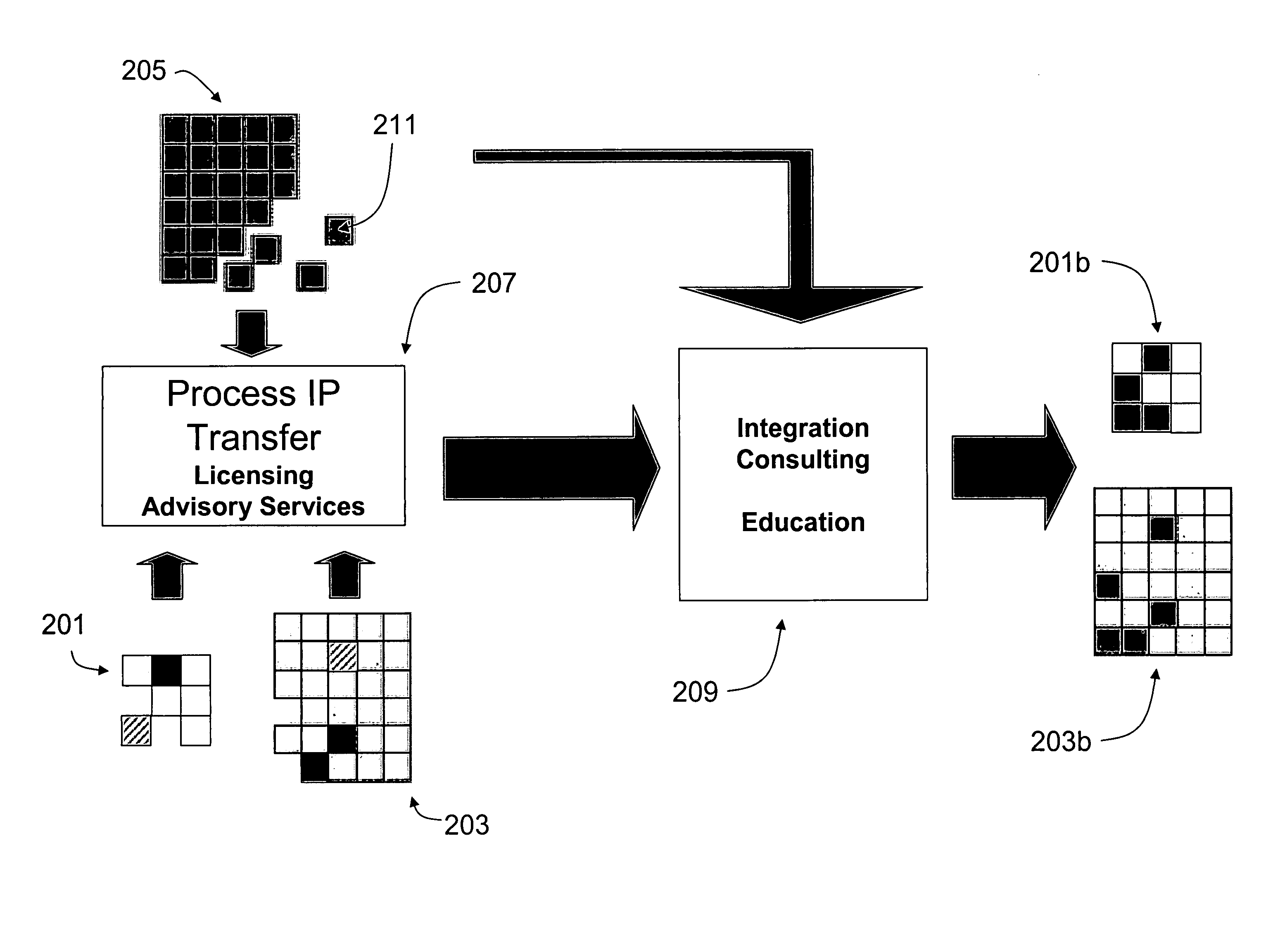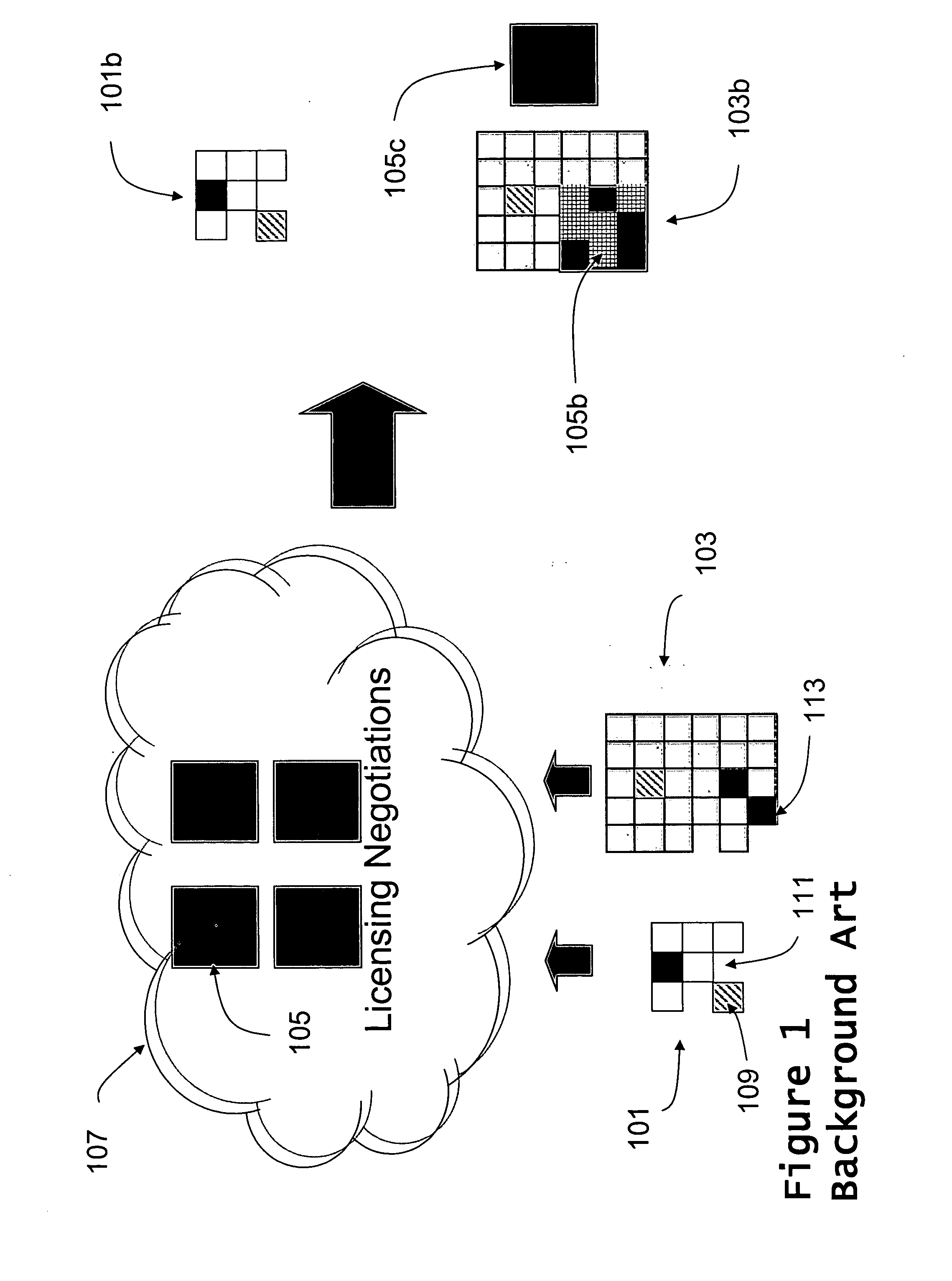Computer-implemented intellectual property technology transfer method and system
a technology of intellectual property and transfer method, applied in the field of transfer of intellectual property (ip) for semiconductor process technologies, can solve the problems of confusion between the “product” (e.g., process technology) and the “market” (potential licensees) in cost and effectiveness, and the unknown transaction cost involved in conventional licensing negotiations is a deterrent or significant hurdle, and achieves significant investment in time and financial resources, and effectively provides the transfer of process technology.
- Summary
- Abstract
- Description
- Claims
- Application Information
AI Technical Summary
Benefits of technology
Problems solved by technology
Method used
Image
Examples
Embodiment Construction
[0051] Referring now to the drawings, wherein like reference numerals designate identical or corresponding parts throughout the several views, FIG. 2A is an exemplary diagram describing an embodiment of the present invention. A small potential licensee 201 and a large potential licensee 203 (each having attributes like that described with regard to FIG. 1), and a licensor of Process IPs 205 engage in a Process IP transfer 207. The transfer includes static or dynamic licensing activities as described above and / or pre-license advisory services, also described above. In addition to transferring Process IPs under conditions determined by licenses, the licensor 205 can also provide additional services 209 including integration consulting and education (such as seminars) for quicker and more efficient integration of Process IPs into the licensees' existing activities. As a result, regardless of size or degree of need, small licensees 201b and large licensees 203b are able to obtain only t...
PUM
 Login to View More
Login to View More Abstract
Description
Claims
Application Information
 Login to View More
Login to View More - R&D
- Intellectual Property
- Life Sciences
- Materials
- Tech Scout
- Unparalleled Data Quality
- Higher Quality Content
- 60% Fewer Hallucinations
Browse by: Latest US Patents, China's latest patents, Technical Efficacy Thesaurus, Application Domain, Technology Topic, Popular Technical Reports.
© 2025 PatSnap. All rights reserved.Legal|Privacy policy|Modern Slavery Act Transparency Statement|Sitemap|About US| Contact US: help@patsnap.com



